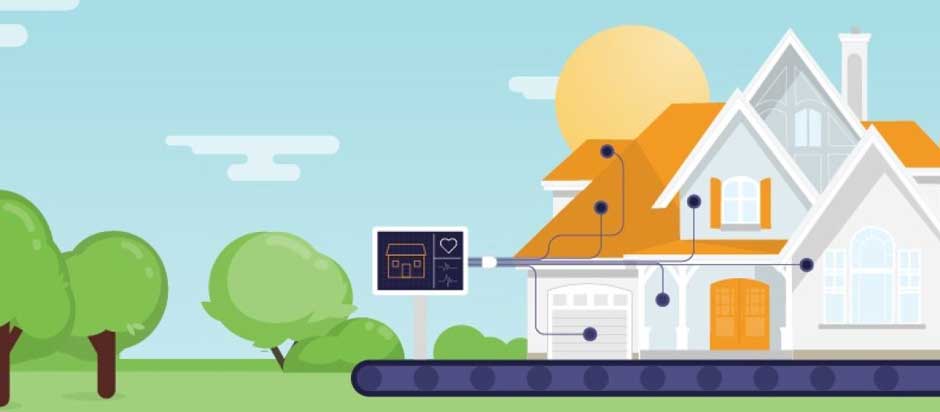How mortgage stress tests work and what they mean for buyers

For anyone purchasing a home in Canada, being able to get a mortgage requires more than just demonstrating a stable income and down payment. Since 2018, the federal government has mandated that most borrowers take a mortgage stress test. This rule was put in place to allow Canadians to make payments even if the interest rate increases or if there are changes in their financial situation. While it may seem like an additional barrier for buyers, the stress test is in place to protect both homeowners and lenders from financial risk.
The goal of the stress test
The stress test is designed to test a borrower’s ability to withstand increases in their mortgage costs in the future. Even if a buyer is approved for a loan by today’s lower mortgage rates, the test uses a higher qualifying rate to determine affordability. This way, homeowners won’t go over their budgets and can still afford to make payments if costs of borrowing rise.
For lenders, the stress test limits the risk of defaults when the economy is not doing well. Households may face stress due to changes in income or job losses and rising interest rates. By setting a higher standard for borrowers, lenders will have greater confidence that a homeowner is able to manage debt responsibly.
How the test is applied
When qualifying for a mortgage, buyers must qualify for the higher of two numbers: the Office of the Superintendent of Financial Institutions benchmark qualifying rate, or the actual mortgage rate of the lender, plus two percent. This means even if you get a competitive rate, you will still be judged for stress testing purposes against a higher rate.
This calculation tends to leave borrowers with a lower approved loan amount than they expect. For instance, a household that would qualify for a certain loan size as a result of their actual income and interest rate may not qualify for as large a mortgage after the stress-test is completed. For many Canadians, this has a direct effect on the size of the home they can afford.
Impact on first time buyers
The stress test has impacted first time buyers in particular. With property prices on the rise and little to no savings, it can be difficult to meet the stricter rules. Many new buyers have had to either manage their expectations, consider smaller homes or widen their search to more affordably priced markets.
At the same time, the stress test can save first time buyers from becoming house poor. That the rules prevent them from becoming insolvent – by ensuring they can work out higher monthly payments in the future While frustrating in the short-term, the long-term win is to have new homeowners secure in their ability to continue making payments over time.
Impact on established residential property owners
The stress test does not apply only to those entering the market for the first time. The rules also apply to homeowners who want to refinance their mortgage or change lenders when their mortgage comes up for renewal. This can restrict refinancing opportunities or leave some borrowers unable to tap into additional funds based on their home equity.
However, homeowners who re-qualify with the same lender generally don’t have to requalify through the stress test. This can lead to a lack of competition in the market but creates an incentive to remain with an existing lender. In the event this becomes possible, speaking with a mortgage broker can help homeowners review available options and determine if switching lenders is still possible.
Relationship to mortgage rates
The effect of the stress test often seems to be stronger if interest rates increase. When borrowing costs are low, the difference between actual mortgage rates and the stress test rate may seem like a manageable difference. But as rates rise, the difference is even bigger, making it even more difficult for borrowers to qualify for the size of the loan they desire.
Yet this relationship implies that the stress test indirectly determines the demand in the housing market. As buying power is diminished, buyers can be deterred from entering the market or buy smaller houses. Over time, this can affect both housing prices and the overall pace of real estate activity.
Strategies for buyers
For buyers who are about to take the stress test, it is important to be well prepared. Increasing credit scores, eliminating existing debts and saving for a larger down payment can all make a property more affordable under the qualifying guidelines. These steps will improve the chances of approval and may help the buyer get better loan terms.
You can also benefit from working with professionals. A mortgage broker, for example, can connect buyers with more lenders, whose conditions may be more flexible. By comparing options, buyers can be fairly confident that they are maximising their financial profile including within the limits of the stress test.
Conclusion
The mortgage stress test has become a regular part of the home buying process in Canada. While it can limit the amount of loans that borrowers can qualify for, it is meant to help protect individuals and the housing market from financial shocks. By learning about the test and preparing ahead of time, buyers can increase their chances of approval and make better decisions in the process. As mortgage rates ebb and flow, the stress test will continue to define the way Canadians approach homeownership, with long-term financial stability at the core of the equation.


